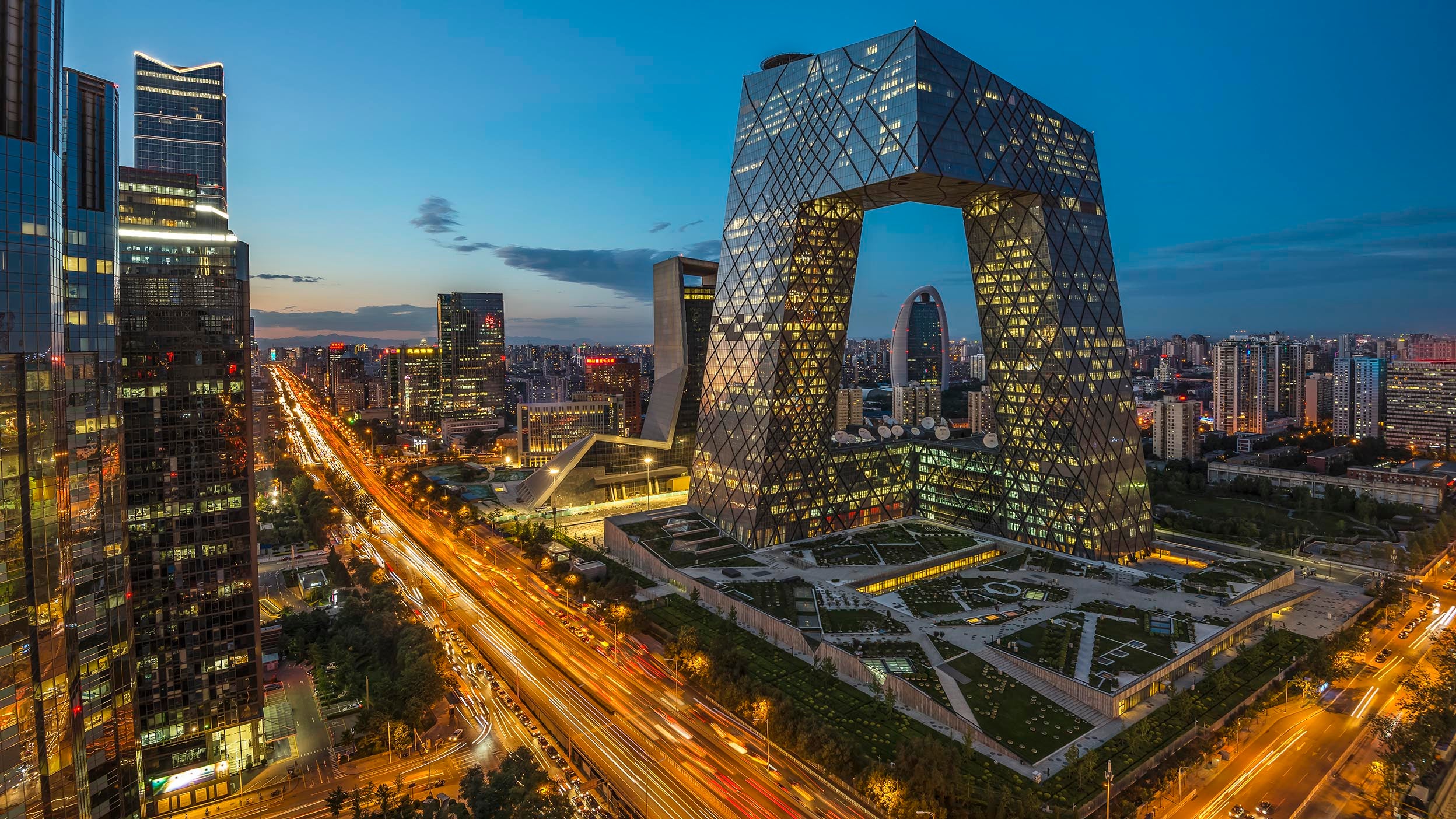
Equities EM spring: A brighter season for emerging market stocks may be ahead
Two longtime headwinds may be turning into tailwinds for emerging market stocks: The Chinese economy and the US dollar.

We are believers in the Indian renaissance story but find broad India equity valuations to be excessive relative to underlying fundamentals.
Though China has a growth problem that needs to be addressed, it also has some of the greatest investment opportunities globally, in our view.
We believe a backdrop of lower sovereign US rates may translate into significant outperformance for large swathes of emerging market equities.
China and India are the two heavyweights in emerging market (EM) equities — two continental-size economies that account for approximately 45% of the EM equity benchmark.1 For EM investors, getting these two right matters, particularly after the massive divergence in performance they’ve experienced over the past few years. But getting them right requires a deep understanding of the bigger picture — the narratives that have driven these recent returns have overwhelmed realities, in our view. Here’s how we view the opportunities in each market based on the narratives and the numbers.
The narratives driving such disparate returns are intuitive: a structural and cyclical growth renaissance in India, and unaddressed structural economic challenges in China. But these narratives have overwhelmed realities, in our view. Here are some of the numbers that help complete the picture for India:
China is the mirror image of India. There is clearly not a lot to get excited about in the Chinese economy. China remains in a classic Keynesian “liquidity trap” in which an asset bubble (real estate) implodes and there is a rush across the economy to de-lever and rebuild balance sheets. Savings across the economy have increased, exacerbating China's excess capacity problem. Consumption has been weak and, therefore, excess capacity has been “dumped” around the world. Chinese policymakers have failed to properly diagnose the problem of insufficient domestic demand — and have seemingly been unwilling to address China's underlying structural problem, which is the need to shift its economic growth model away from excessive reliance on investment.
But here is what we would add to the narrative about China:
EM equities have been “all about India” over the past few years — a refuge for EM and global investors against a backdrop of considerable uncertainty (the path of US interest rates, China’s economy in a funk). India has become an expensive market driven by narrative, rather than numbers. While we also dream big, our investment process demands rigorous attention to valuation.
The big next story for EM equities, in our view, is the potential for broad outperformance against developed markets. And this involves the lifting of two clouds that have lingered for some time — US interest rates and China. We are cautiously hopeful that improvements on both are imminent.
Now is the time to get excited again about EM equities, in our view. And now is the time to calibrate narratives around India, which has benefited from clouds elsewhere.
MSCI Emerging Markets Index as of 06/30/2024
MSCI, Bloomberg as of 06/30/2024.
MSCI, Bloomberg as of 06/30/2024.
Estimates based on International Monetary Fund’s world economic outlook and indicators.
Holdings breakdown: Tencent represents 6.28%, H World represents 4.19%, PinDuoDuo represents 1.62% and AIA Group is 0.05% of the Invesco Developing Markets Fund.

Two longtime headwinds may be turning into tailwinds for emerging market stocks: The Chinese economy and the US dollar.

A rotation to mid-cap leadership, after a long period of large-cap outperformance, is in motion with an increasingly attractive setup for 2025. Here are three reasons why we’re optimistic.

Our experts address the critical questions that arose following the news of DeepSeek’s artificial intelligence model and the market’s volatile reaction.
NA3743595
Photographer Credit : Gavin Hellier/ STOCKSY
There is no guarantee that forecasts will come to pass.
This does not constitute a recommendation of any investment strategy or product for a particular investor. Investors should consult a financial professional before making any investment decisions.
All investing involves risk, including the risk of loss.
Past performance does not guarantee future results.
Investments cannot be made directly in an index.
Holdings are subject to change and are not buy/sell recommendations.
The funds listed are subject to certain other risks. Please see the current prospectus for more information regarding the risks associated with an investment in the fund.
Derivatives may be more volatile and less liquid than traditional investments and are subject to market, interest rate, credit, leverage, counterparty and management risks. An investment in a derivative could lose more than the cash amount invested.
In general, stock values fluctuate, sometimes widely, in response to activities specific to the company as well as general market, economic and political conditions.
Stocks of small and mid-sized companies tend to be more vulnerable to adverse developments, may be more volatile, and may be illiquid or restricted as to resale.
Growth stocks tend to be more sensitive to changes in their earnings and can be more volatile. The risks of investing in securities of foreign issuers, including emerging market issuers, can include fluctuations in foreign currencies, political and economic instability, and foreign taxation issues.
Investments focused in a particular sector, such as financials, are subject to greater risk, and are more greatly impacted by market volatility, than more diversified investments
Many products and services offered in technology-related industries are subject to rapid obsolescence, which may lower the value of the issuers.
The performance of an investment concentrated in issuers of a certain region or country, such as China and India, is expected to be closely tied to conditions within that region and to be more volatile than more geographically diversified investments.
Investing in securities of Chinese companies involves additional risks, including, but not limited to: the economy of China differs, often unfavorably, from the U.S. economy in such respects as structure, general development, government involvement, wealth distribution, rate of inflation, growth rate, allocation of resources and capital reinvestment, among others; the central government has historically exercised substantial control over virtually every sector of the Chinese economy through administrative regulation and/or state ownership; and actions of the Chinese central and local government authorities continue to have a substantial effect on economic conditions in China.
Following Russia’s invasion of Ukraine in February 2022, various countries, including the U.S., NATO and the European Union, issued broad-ranging economic sanctions against Russia and Belarus. As a result, responses to military actions (and further potential sanctions related to continued military activity), the potential for military escalation and other corresponding events, have had, and could continue to have, severe negative effects on regional and global economic and financial markets, including increased volatility, reduced liquidity, and overall uncertainty. Russia may take additional counter measures or retaliatory actions (including cyberattacks), which could exacerbate negative consequences on global financial markets. The duration of ongoing hostilities, corresponding sanctions and related events cannot be predicted. As a result, the value of an investment in the Fund and its performance may be negatively impacted, particularly as it relates to Russia exposure.
Environmental, Social and Governance (ESG) considerations may vary across investments and issuers, and not every ESG factor may be identified or evaluated for investment. The Fund will not be solely based on ESG considerations; therefore, issuers may not be considered ESG-focused companies. ESG factors may affect the Fund’s exposure to certain companies or industries and may not work as intended. The Fund may underperform other funds that do not assess ESG factors or that use a different methodology to identify and/or incorporate ESG factors. ESG is not a uniformly defined characteristic and as a result, information used by the Fund to evaluate such factors may not be readily available, complete or accurate, and may vary across providers and issuers. There is no guarantee that ESG considerations will enhance Fund performance.
Price to earnings (P/E) ratio measures a stock’s valuation by dividing its share price by its earnings per share.
The MSCI Emerging Markets Index captures large- and mid-cap representation across 26 Emerging Markets (EM) countries. With 1,198 constituents, the index covers approximately 85% of the free-float-adjusted market capitalization in each country. Holdings are subject to change and are not buy/sell recommendations.
The MSCI China Index captures large- and mid-cap representation across China H shares, B shares, Red chips, P chips and foreign listings (e.g. ADRs). With 495 constituents, the index covers about 85% of this China equity universe. Currently, the index also includes Large Cap A shares represented at 10% of their free float adjusted market capitalization.
The MSCI India Index is an unmanaged index considered representative of Indian stocks.
The NIFTY PSU Bank index is a sectoral index on the National Stock Exchange (NSE) that captures the performance and behavior of the public sector banks. It is a real-time index consisting of 12 PSU stocks that are tradeable on NSE.
The Fund may hold illiquid securities that it may be unable to sell at the preferred time or price and could lose its entire investment in such securities.
The opinions expressed are those of the Portfolio Managers of the Invesco Developing Markets Fund and are based on current market conditions and are subject to change without notice. These opinions may differ from those of other Invesco investment professionals.
The investment techniques and risk analysis used by the portfolio managers may not produce the desired results.
Before investing, investors should carefully read the prospectus and/or summary prospectus and carefully consider the investment objectives, risks, charges and expenses. For this and more complete information about the fund(s), investors should ask their financial professional for a prospectus/summary prospectus or visit Invesco.com.
This link takes you to a site not affiliated with Invesco. The site is for informational purposes only. Invesco does not guarantee nor take any responsibility for any of the content.